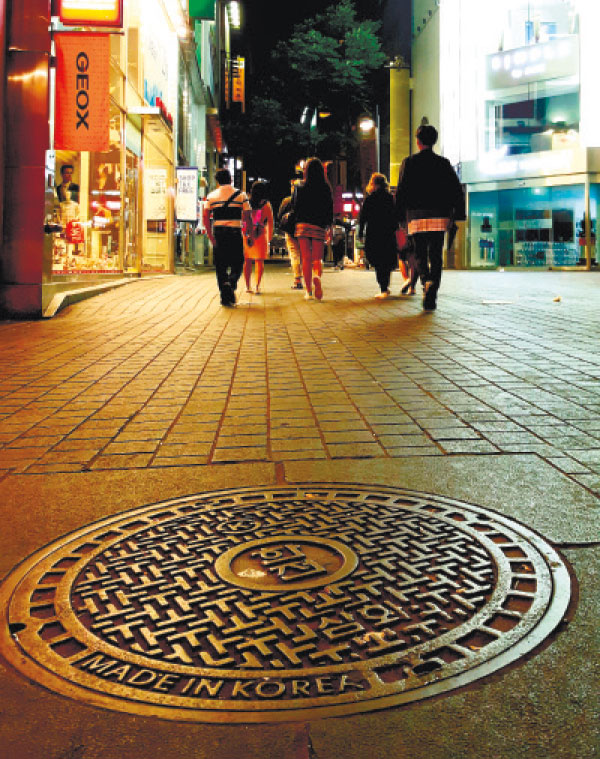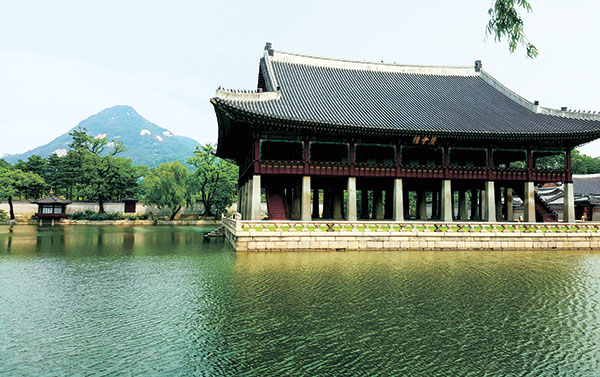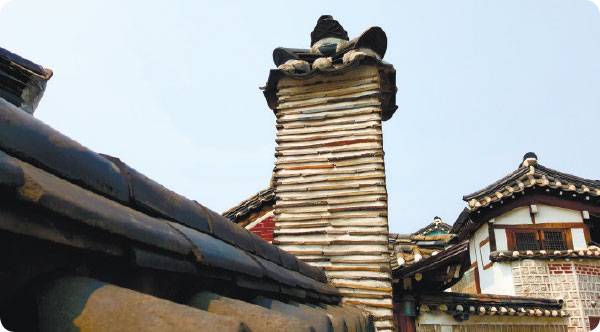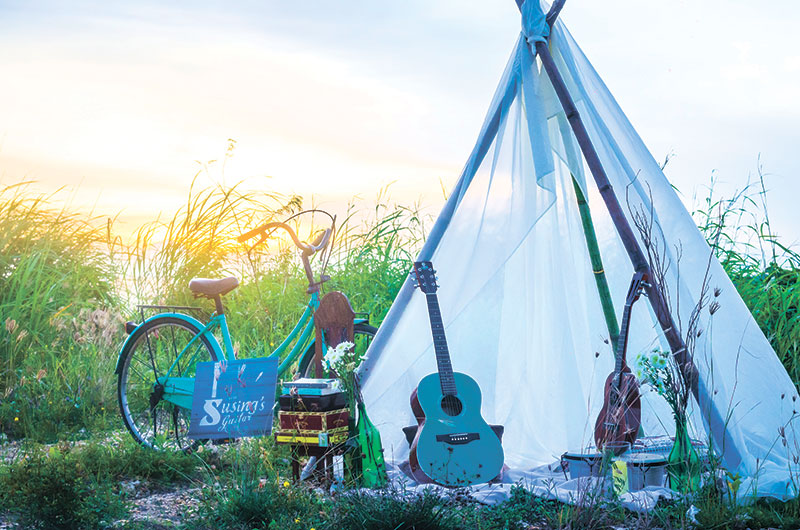Time for some Seoul searching
6 reasons the South Korean capital is perfect for finding inspiration
Text & Photos by Noel S. Villaflor
WHEN one says South Korea, the first thing that usually comes to mind is K-Pop and all the frivolous sounds and images associated with this global cultural phenomenon. Yet South Korea, global electronic brand notwithstanding, is more than that, of course. This I had the chance to realize firsthand in Seoul during a familiarization tour that Philippines AirAsia organized for print and online media practitioners last June.

During our four-day stay in the South Korean capital, one observation struck me: even if it’s the fourth largest metropolitan economy in the world, the pace of life there didn’t seem hurried, frantic or on the edge. Motorists patiently waited for crossing pedestrians, who themselves waited their turn (not a horn was honked during our short stay). Mom-and-pop watering holes hosted patrons who nonchalantly relished their delicious draft beer and world-famous Korean fried chicken. Even at the commercial districts, there was no apparent sense of urgency. Everyone it seemed was taking their reasonable time yet wasting none.
And so in my head, the image of a frienzied K-Pop culture permeating every aspect of Korean culture in the capital dissipated. In its place was that of a soulful Seoul, a more apt representation of what its monicker, “The Heart of Korea,” means, of Seoul being a place where the traveler in search of that elusive something can reboot. Seoul, in a nutshell, is where old and new co-exist, where classical traditions and modernity are much a part of daily life, very much like the yin and yang on its flag that represent how contradicting elements complement each other to form a harmonious whole. In Seoul, inspiration isn’t hard to come by.
Anyway, now that you’re in quite a Seoul-searching mood, here’s a list of what’s worth contemplating in must-visit sites should you decide to fly to the South Korean capital:


Contemplate tradition and heritage at the Gyeongbokgung Palace
Built in 1395, the Gyeongbokgung Palace served as the main palace of the Jeoson Dynasty. Given its stature, South Korea’s tradition and heritage centerpiece was nearly destroyed twice: first in the Japanese invasions of the 1590s, and then during the Japanese occupation in the 1910s when 90 percent of the structures were torn down. Surprisingly, the Gyeonghoeru Pavilion and Hyangwonjeong Pond, the Joeson Dynasty’s most significant structures, were largely unscathed.

Still, the damage that the invaders inflicted left such emptiness that to this day the South Korean government continues to reconstruct or restore dozens of structures destroyed over an area of 40 hectares. Looking at the grand structures of the palace, one gets a sense of the country’s troubled history on one hand, and on the other, the kind of perseverance and resilience that defines the Korean people.

Contemplate the past and present at Bukcheon Hanok Village
There’s a hill in the heart of Seoul where a 600-year-old Korean village stands. A few of the hundreds of houses have gone through adaptive reuse as shops, museums, and tea houses, but many of the hanok, or traditional homes, that date back to the Jeoson Dynasty are still occupied by regular Korean families. And instead of wooden carts, sedans and SUVs pass through the roads made even narrower by daily throngs of tourists who visit the Bukcheon Hanok Village (as such, signs reminding visitors not to disturb residents have been posted all around).

Overlooking the commercial districts and located near the royal palaces including the Gyeongbokgung Palace, the traditional village served as residential quarters for the nobility and top government officials. Despite the crowds, one can still find quiet nooks and corners and observe more closely traditional architectural details, and perhaps imagine what it was like to have lived in this village centuries ago.

Contemplate livability at the Cheonggyecheon Stream
At 605 square kilometers, Seoul has managed to preserve much of its natural open spaces such as Mt. Namsan and waterways like the great Han River for the benefit of its residents. And those that were nearly destroyed? They’ve been successfully revived. One is the Cheonggyecheon Stream, which years ago was featured in a Discovery Channel documentary that called the restoration project a man-made marvel. More importantly, the project, completed in 2005, is a feat in urban renewal: an elevated highway over the stream was torn down to restore the 11-kilometer waterway that had dried up from decades of neglect. Now, the historic stream — deemed essential in the Joeson Dynasty — has been restored to its former, pristine glory with a modern twist, serving as a flood control system, increasing biodiversity and even bringing down temperatures in the area. It has since become a favorite retreat for Seoul locals and visitors, who dip their feet in the cool waters of the stream after strolling in the pedestrian-friendly city.

Contemplate possibilities at the N Seoul Tower
Rising close to 500 meters above sea level, the N Seoul Tower offers visitors a panoramic view of Seoul. Since its completion in 1980, the 236-meter tower has become a main tourist attraction. More than that, however, the N Seoul Tower perhaps is symbolic of South Korea’s aspirations, as its construction coincided with the country’s rapid growth amid trying times: its economic and infrastructure foundations were laid down at that period.

From the tower’s observatory, the progress that South Korea has achieved stretches as far as the eye can see. Other attractions at the tower are a revolving restaurant, traditional performances at the courtyard, and lock “trees” for romantics who believe in the possibility of being locked together forever in love.

Contemplate reality at the Trick Eye and Wax Museums
South Koreans have a vivid imagination, and this imagination in turn comes with a penchant for tweaking reality. Two attractions in Seoul bolster this observation: The Grevin Seoul Museum and Trick Eye Museum. The Grevin Seoul Museum is the fourth addition to France’s famous beeswax museums that has locations in Paris, Montreal and Prague. Apart from the regular fare of famous Hollywood celebrities and world leaders, the Seoul wax museum features a number of homegrown heroes and celebrities, including Korea’s top K-Pop export Psy.

The Trick Eye Museum, on the other hand, draws visitors in the illusory world of interactive 3D images, paintings and visual technology, such as a digital Buddha head that tracks your every move. Also housed in the Trick Eye Museum are a Sex Museum and an Ice Museum, a room of ice sculptures and structures kept frozen at minus 7 degrees centigrade. These mind-bending museum experiences are just for kicks, though, but well worth the visit.

Contemplate the future at the Dongdaemun Design Plaza
With a neofuturistic design, the Dongdaemun Design Plaza or DDP, is considered “the most iconic landmark of the Korean design industry.” The structure, designed by architect Zaha Hadid and Korean studio Samoo, offers roughly 8.5 hectares of floor space where the most forward-looking and innovative minds and their ideas and works from fashion to consumer products are on display. Among recent events of interest held at the design plaza were an exhibit of Jean Paul Gaultier’s works and the “Drone Fight Club,” which as the name suggests, is a competition where the last drone standing, er flying, wins.

Other impressive features of the DDP is a walkable roof park, a restored fortress, futuristic retail shops, and the walkways that connect it to four levels of the Seoul Subway. Everywhere you look at the DDP, it says: the future is here.



